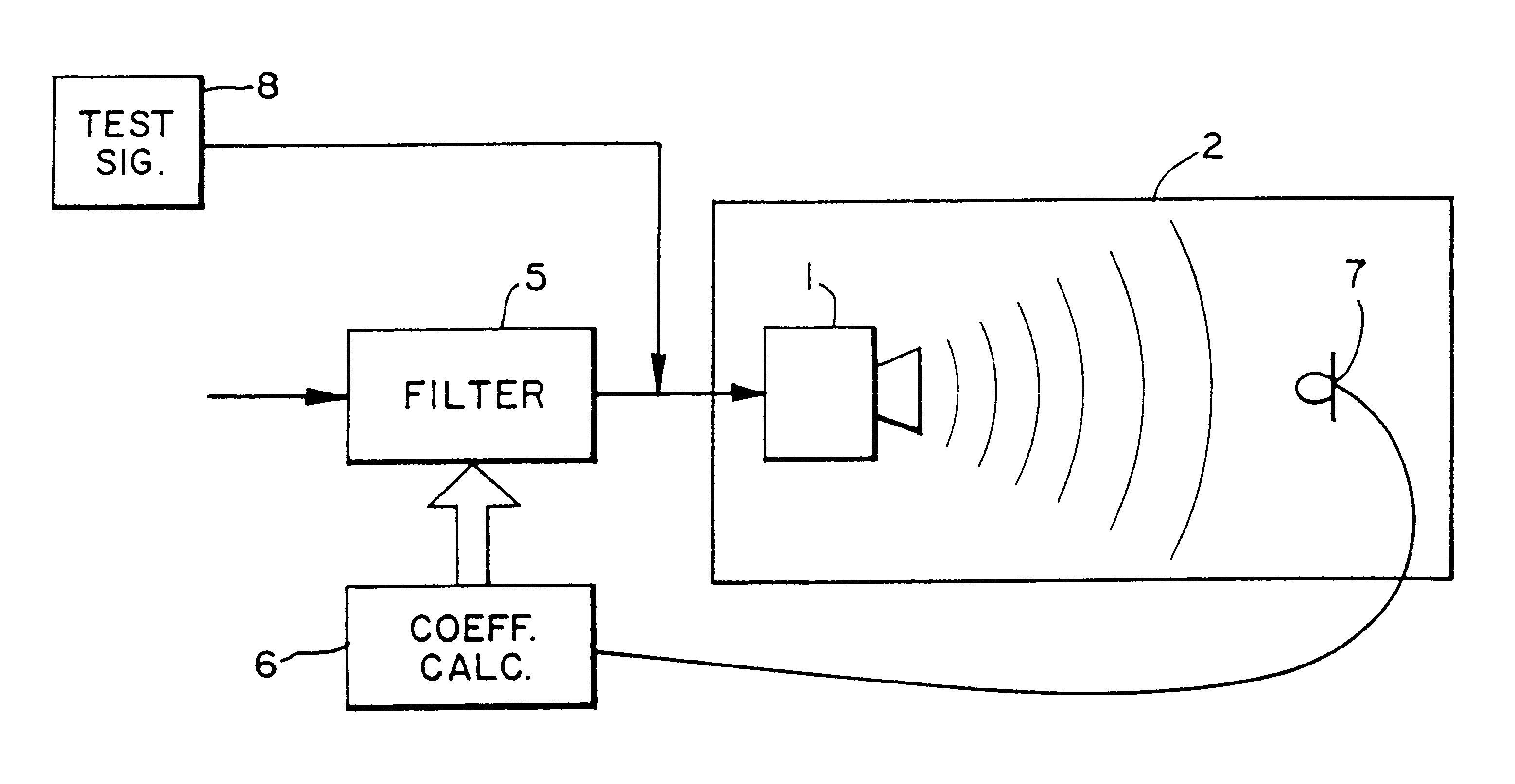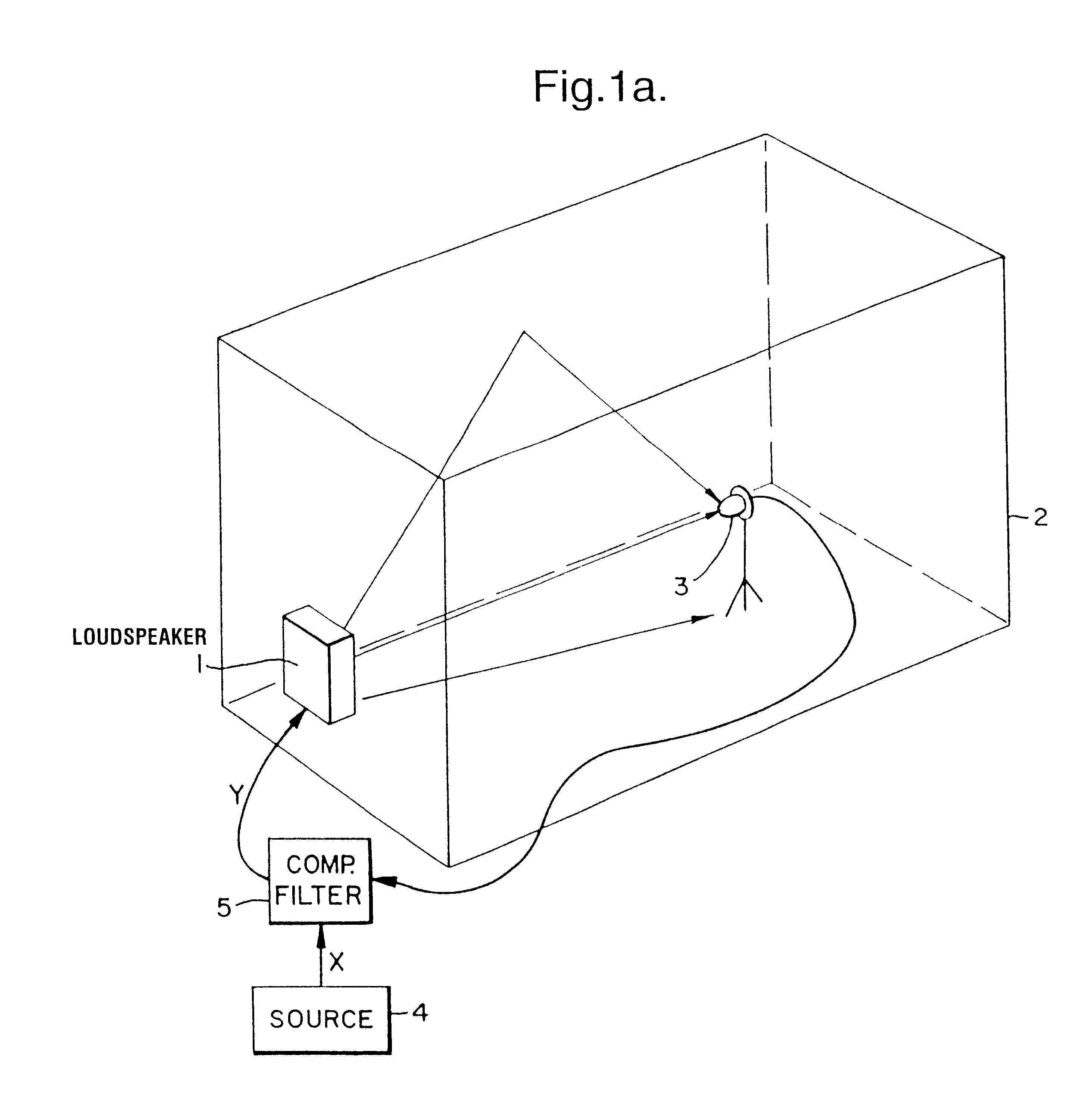Compensating filters
a filter and compensation technology, applied in the field of filtering audio signals, can solve the problems of inability to measure the response of the loudspeaker separately in practice, complex modelling of the mechanical behaviour of the loudspeaker, and inability to measure the response of the loudspeaker
- Summary
- Abstract
- Description
- Claims
- Application Information
AI Technical Summary
Benefits of technology
Problems solved by technology
Method used
Image
Examples
Embodiment Construction
Referring to FIG. 1a, a loudspeaker 1 is positioned within a room or other acoustic environment 2. Also within the room 2 is a listening point 3; a microphone at this point is illustrated, but in use a human ear would take its place. The loudspeaker 1 is fed from a signal source 4 an electrical signal representing a sound signal to be reproduced by the loudspeaker 1. In the electrical path between the source 4 and loudspeaker 1 is the compensating filter apparatus 5 the subject of the present invention.
The acoustic signal generated by the loudspeaker in response to the electrical signal it receives traverses the acoustic environment 2 by several paths; through the floor, directly through the air, and via multiple reflections from the walls, floor and ceiling. The walls, floor and ceiling will to some extent attenuate the acoustic signal with each reflection. If the degree of attenuation is relatively low, long resonances lasting several seconds can build up depending u...
PUM
 Login to View More
Login to View More Abstract
Description
Claims
Application Information
 Login to View More
Login to View More - R&D
- Intellectual Property
- Life Sciences
- Materials
- Tech Scout
- Unparalleled Data Quality
- Higher Quality Content
- 60% Fewer Hallucinations
Browse by: Latest US Patents, China's latest patents, Technical Efficacy Thesaurus, Application Domain, Technology Topic, Popular Technical Reports.
© 2025 PatSnap. All rights reserved.Legal|Privacy policy|Modern Slavery Act Transparency Statement|Sitemap|About US| Contact US: help@patsnap.com



